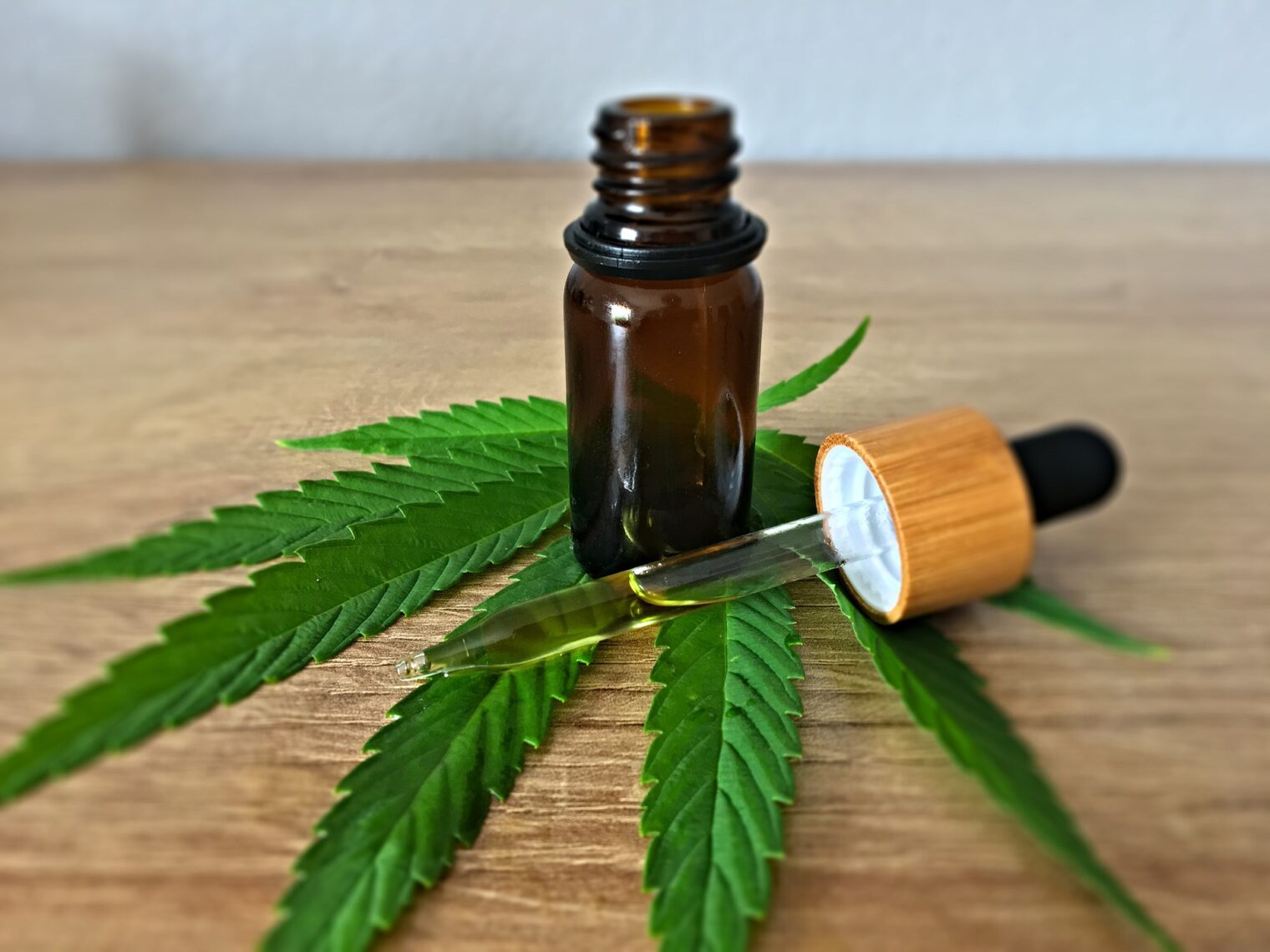Explaining THC Levels in Cannabis Plants
Are you curious about why some cannabis packs more punch than others? THC, or tetrahydrocannabinol, is the main ingredient that determines a plant’s kick. This post will guide you through understanding THC levels in your favorite buds and what they mean for your experience.
Let’s dive into a greener understanding together!
Understanding THC Potency
THC is the main psychoactive compound in cannabis that produces a “high” feeling, while CBD provides therapeutic effects. Different types of cannabis products have varying levels of THC and CBD, with some containing average potency and others having high levels of THC.
What are THC Levels and its effects?
THC, short for tetrahydrocannabinol, is the primary psychoactive compound found in cannabis plants. It’s responsible for creating the sensation of being high that users experience after consuming marijuana.
The effects of THC can vary widely based on how much you consume and your body’s reaction to it. People typically report feelings of euphoria, relaxation, and altered sensory perception when THC enters their bloodstream.
However, it can also lead to less desirable reactions such as anxiety or paranoia in some individuals.
Consuming THC affects both the mind and body and has been used therapeutically for pain relief, appetite stimulation, and to reduce nausea. Recreational users often seek out strains with higher levels of this cannabinoid for a more intense experience.
In any product from dried flower to edibles or extracts, understanding the percentage of THC is vital for predicting its potential impact. Moving on from pure potency consideration leads us into exploring different types of cannabis products available in today’s market.
Different types of cannabis products
Now that we understand the effects of THC, it’s important to explore the different types of cannabis products available. These include cannabis flower, marijuana extracts, and edibles.
Each product type offers a distinct experience due to variations in their phytocannabinoid composition. Cannabis flower refers to the harvested and dried buds of the cannabis plant – commonly used for smoking or vaporizing.
Marijuana extracts can come in various forms including oils, tinctures, and concentrates, offering potent doses of THC and other cannabinoids. Edibles encompass a wide range of food and drink products infused with THC or CBD, providing an alternative consumption method for those who prefer not to smoke.
Average and high levels of THC
Cannabis products can vary widely in their THC potency, with average levels ranging between 10-20%, while high-potency options can contain over 20% THC. It’s important for consumers to be aware of these differences, as higher THC levels may lead to more intense psychoactive effects and increased potential for adverse reactions, especially among novice users or those sensitive to THC.
Consumers should carefully consider their tolerance and desired experience when choosing cannabis products with varying levels of THC. Understanding the potency of different options can help individuals make informed decisions about their cannabis use and minimize the risk of experiencing unwanted side effects.
How to Read a Cannabis Package
Cannabis packages are required to display a standardized cannabis symbol and brand name, along with the THC and CBD content. Health warnings and other required information, as well as nutrition facts and a list of ingredients, are also included on these packages.
Standardized cannabis symbol and brand name
Cannabis products now feature a standardized symbol and brand name to provide clear identification. The purpose is to make it easy for consumers to recognize THC and CBD percentages, health warnings, and other required information on the package label without confusion.
This uniform approach streamlines consumer understanding and ensures that crucial details are prominently displayed. By standardizing symbols and brand names, the cannabis industry aims to assist consumers in making educated choices when selecting products.
Moving on from package labeling, let’s delve into how THC and CBD content is listed alongside health warnings and nutrition facts.

THC and CBD content
When examining cannabis products, it’s essential to understand the THC and CBD content. The THC (tetrahydrocannabinol) level indicates the potency of psychoactive effects, while CBD (cannabidiol) is known for its potential medicinal benefits.
Regulations require cannabis packaging to display the percentage of both THC and CBD. This information helps consumers make informed choices based on their preferences and needs. High-THC products may be more suitable for experienced users seeking intense effects, whereas those looking for medicinal benefits with minimal psychoactive effects may prefer higher-CBD options.
Consumers can use this information to select products that align with their desired experience or therapeutic goals. Furthermore, understanding THC and CBD content allows individuals to track their consumption accurately and make well-informed decisions regarding appropriate dosing based on product potency.
Health warnings and other required information
After understanding the THC and CBD content of cannabis products, it’s crucial to be aware of the health warnings and other essential details on the packaging. This information typically includes standardized cannabis symbols, brand names, THC and CBD content, nutrition facts, a list of ingredients, and any required health advisories.
These warnings are essential for consumers to make informed decisions about their consumption.
When purchasing cannabis products, consumers should pay close attention to any mandatory health warnings provided on the packaging. In addition to THC and CBD percentages, these labels provide vital information for users to understand the potential risks associated with consuming specific cannabis products.
Nutrition facts and list of ingredients
The nutrition facts and list of ingredients provide essential information about the content of cannabis products. Consumers can easily identify the THC and CBD content along with any potential allergens or additives listed in the ingredients.
This transparency is crucial for individuals who need to monitor their intake levels, especially when using edibles or concentrates. Checking these details helps consumers make informed choices according to their preferences and health needs, supporting a responsible approach to consuming cannabis products.
Understanding the significance of nutrition facts and ingredients empowers consumers to make educated decisions regarding their cannabis consumption. It allows them to consider not only THC potency but also other components that may impact their experience, such as flavoring agents or potential allergens.
Measuring THC Levels
Cannabinoid screening and confirmation are essential for accurately measuring THC levels in cannabis products. Understanding the effects of THC on the body and factors that can affect test results is crucial for consumers and regulators alike.
Cannabinoid screening and confirmation
Laboratory analysis is used to screen and confirm the presence of cannabinoids in cannabis products. Specialized tests measure the levels of THC, CBD, and other compounds to determine potency.
These screenings help ensure accurate labeling and provide consumers with essential information about the product they are purchasing.
Understanding cannabinoid screening methods can empower consumers to make informed decisions about their cannabis use. The results of these tests also assist regulators in enforcing laws regarding THC potency in cannabis products.
Effects of THC on the body
THC, the psychoactive compound in cannabis, interacts with the body’s endocannabinoid system upon consumption. It binds to cannabinoid receptors in the brain and nervous system, affecting coordination, memory, pleasure, thinking, concentration, and perception.
Additionally, THC triggers dopamine release in the brain. This can result in a feeling of euphoria or a “high” but may also lead to impaired motor skills and altered sensory perception.
When THC is introduced into the body through smoking or ingestion, it is metabolized by the liver into more potent forms that can remain in the body for an extended period. This prolonged presence of THC can impact various functions such as mood regulation and cognitive abilities.
Furthermore, higher levels of THC are associated with potential adverse effects on mental health and increased risk of dependency.
Factors that can affect test results
Several factors can influence the accuracy of THC test results, including how cannabis samples are handled and stored. Environmental conditions such as light, heat, and moisture can also impact THC levels in cannabis products.
Additionally, variations in testing methods and equipment used by different laboratories can affect the consistency of THC measurements.
Understanding these factors that may influence test results is crucial for consumers, cultivators, and regulators to ensure the reliability of THC potency information provided on cannabis product labels.
Consistency across testing procedures and accurate representation of THC levels are essential for making informed decisions about cannabis consumption.
The Rise of High Potency THC Marijuana
With the increasing demand for high potency THC marijuana, it is important to understand the potential risks and concerns associated with consuming products with elevated THC levels.
Statistics on THC potency in cannabis products will be explored, shedding light on the implications of this trend.
Statistics on THC potency in cannabis products
Recent statistics show a significant increase in the average THC potency of cannabis products, particularly in dried flower and marijuana concentrates. The surge in high-potency THC marijuana is attributed to advancements in cultivation techniques and selective breeding for higher THC content.
These statistics highlight the need for consumers to be more vigilant when selecting cannabis products and to be aware of the potential risks associated with consuming high levels of THC.
Furthermore, the data underscores the importance of clear labeling and accurate information regarding THC percentages on cannabis packaging. This information enables consumers to make informed decisions about their consumption and supports responsible use within both medical and recreational contexts.
Potential risks and concerns
With the increased availability of high-potency THC marijuana products, there are growing concerns about the potential risks associated with their use. High levels of THC can lead to an increased risk of developing mental health issues, particularly in young people.
Additionally, there is concern about the impact on cognitive function and brain development, as well as the potential for addiction and dependence.
Consuming cannabis with elevated THC levels also raises apprehensions regarding impaired driving and workplace safety. High potency THC products can pose a higher risk of adverse reactions such as paranoia, anxiety, or hallucinations.
Conclusion
In summary, understanding the potency of THC in cannabis products is crucial for consumers to make informed choices. By knowing how to read cannabis packaging and measure THC levels, individuals can better gauge the potential effects and risks associated with different products.
The rise of high potency THC marijuana also underscores the importance of educating consumers about the potential implications and promoting responsible use. Overall, being aware of factors that affect THC potency can help individuals navigate the evolving landscape of cannabis products effectively.


